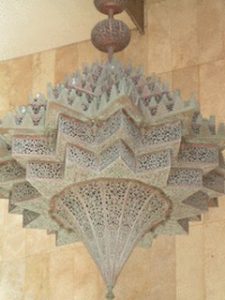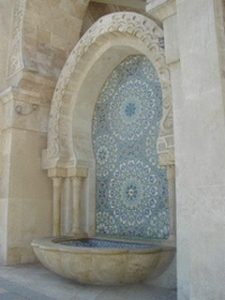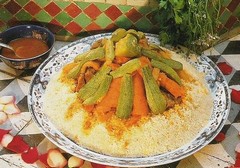Trip Description
PEARLS OF ART
 Asilah
Asilah
It is a town where the history started with the invasion of the Carthaginians, after arrived the Romans, the Portuguese, Spanish and for 2000 years its events were lucky and unlucky. From the 17th century and till Morocco’s independence the town was under Spanish control.
Would you like to discover the town? Walk along its streets discovering the wonderful light blue and white houses, surrounded by high walls; every Thursday the local farmers arrive in the town for the weekly open market, wearing traditional and colourful clothes.
Larache
The influence of Spanish history is very strong here, in the town you can visit an Archeological Museum, built close to a rampart that belongs to the 16th century.
The Fortress of the Stork belongs to 1578, it was built by some Portuguese prisoners, wanted by one Saadian Sultan, it was restored during the 17th century. The souk is located between towers, domes, walls and arches, from the town you can admire a fantastic landscape on the sandy beach.
Tangeri
Meeting point of different civilizations between the Mediterranean Sea and the Atlantic Ocean.
It was built on green hills, but its bay is on the Mediterranean Sea.
A visit around the town permit to discover the old Sultan Palace, its Kasbah, the narrow streets of the Medina, and the wonderful belvedere on the Straits of Gibraltar. Would you like to make some excursions? Go to discover Cape Spartel the extreme part of Africa, close to the Hercules Caves, or to Cape Malabata.
Chefchaouen
A mysterious town where the Spanish and Moorish cultures interlaced for centuries. The first thing that you will do is to go around the village to discover the light blue houses with their pink roofs, here life is very calm, Chefchaouen is a place that will stay in your heart forever.
Tetouan
Hue, warmth, shades, those three words explain the meaning of this town: white houses and back to them a green valley surrounding it, the light blue hue of the Martil wadi (river), and the Rif Mountains that dominate the town, that is Tetouan.
Al Hoceima
Fishermen town is a pearl setting between the cliffs, it is famous because here they live a lot of settlements of turtles, dolphins and nun seals.
Saidia
Fishermen village and a touristic destination on the sea; there is a wonderful beach here, where you can relax and swim in its crystal-clear light blue water.
 Essaouira
Essaouira
In the pastime, there was a large community of Jewish people. this town was an important business and handicraft centre.
The wonderful Medina is part of the World Heritage of UNESCO; on your visit to the town, you should discover its Kasbahs, the fortress on the harbour with the embattled walls. Nowadays you can admire the Spanish cannons on the Atlantic Ocean (17th and 18th centuries).
Walking along the narrow streets you can see a lot of handicraft shops where the inlayers work the cedar and ebony wood, the smell will keep company. without forgetting the yearly Arts and Music Festival (in June and July), which highlights the trance–like Gnawa music of Morocco and features the fusion of many international artists from Africa and abroad.
El Jadida
In 2004 the town was declared a World Cultural Heritage by UNESCO, El Jadida is the perfect example of a cultural mix between Morocco and Europe.
The fortress is a wonderful example of the local architecture and its huge rampart dominates the port; in the “heart” of the town you can discover the Portuguese water cistern, nowadays a location for international movie productions.
Taroudant
The old capital of the Sous region is surrounded by the longest walls, made in copper dyed clay. Walking around the town you can discover its fantastic souks, where you can buy handmade carpets, jewels, pottery and leather. Unforgettable the Berber Market: tradition, hues and scents: these are the words that explain a walk to visit it if you want to buy handmade textiles, fresh vegetables or spices.
Ouarzazate
Known as the Gateway to the Great Desert. The huge Kasbah Taourirt houses a 19th-century palace. It’s an oasis in the middle of the desert, with a lot of date palms, oleanders, and Kasbahs.
Ouarzazate offers a view of the surrounding rocky landscape, which appears in many films. Lawrence of Arabia, The tea in the desert, The Gladiator …





